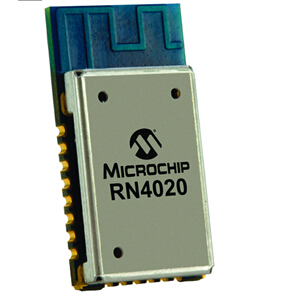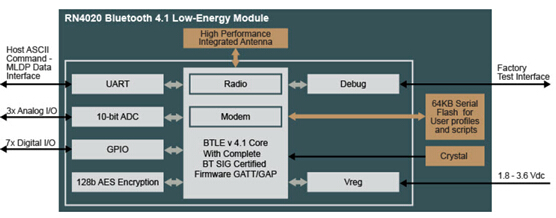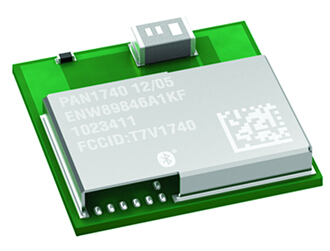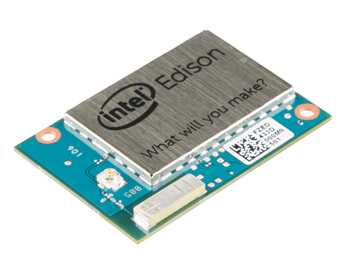The development of embedded systems has promoted the rise of the Internet of Things, and more and more B2B and B2C companies are actively clouding product design, and wireless technology plays a vital role in it. In the current IoT system, many of them have established their own gateway platforms, which are designed to provide certain local storage space and computer intelligence in the local node network and cloud remote connection. Wi-Fi is usually used for remote communication, while Bluetooth It is the preferred protocol for edge nodes such as sensors, switches, and appliances. Low power Bluetooth In 2010, Bluetooth technology first entered the 4.X era, and low-power Bluetooth also appeared in time, which is of great significance for sensors and control software for the Internet of Things. Low-power Bluetooth, as its name implies, has low energy consumption as its main target, rather than high data rate. It has many ways to reduce energy consumption, such as reducing the use time of wireless receiving devices, reducing the scanning of advertisements (in the process of opening web pages), only in Send and receive small packets and so on when turned on, so the Bluetooth low energy protocol can quickly set up a network connection, and the power consumption is usually one percent of the traditional Bluetooth version. However, low-power Bluetooth also has some drawbacks, for example, its maximum short burst data rate is only 100 kbit/s, while traditional Bluetooth can reach up to 3 Mbit/s (v2.0 version plus enhanced data rate). ). Therefore, when the amount of data dominates the demand for high data rates, the use of traditional Bluetooth protocols will be more appropriate. The embedded system designer can determine the Bluetooth protocol required by the application and then integrate it with the main processing system. Designing a unique split wireless receiver is a very groundbreaking idea, but it takes a lot of time to complete the device. Another option is to use a Bluetooth module that is already qualified to integrate it with the existing design. It can embed all Bluetooth stacks into the microcontroller of the receiver host at a very high price. A set of easy-to-use APIs connected to the interface bus for easy setup and transfer of data. Figure 1 Microchip module RN4020 Figure 1 shows the low-power Bluetooth module - the micro-core RN4020. It is suitable for industrial control systems, IoT sensor tags and medical devices. This module is controlled by a simple UART interface. An application interface configured to apply the American Standard Code for Information Interchange, which provides link setup, sleep mode switching, and all low-power Bluetooth protocol management. The maximum current of the RN4020 module is 16 mA, the minimum current in sleep mode is 5 μA, and the current value can be less than 1.5 μA during shutdown. Consistent with the Bluetooth Low Energy v4.1 specification, the RN4020 module includes all the necessary embedded Bluetooth protocol stack shapes, so the application microprogram controller does not require any stack to operate. Figure 2 RN4020 block diagram In Figure 2 we can see that the RN4020 module contains 3x10-bit analog converter channels with up to seven general-purpose input and output interfaces, some of which can be used to manipulate the module mode status LEDs to show connection status, operational indications, and microcores. Whether the low energy data graph is on. Bluetooth for multi-connection and application user interface needs If you need more connectivity options and application software user interface support in the IoT design, then Panasonic's PAN1740 module will be an ideal choice. Like the Bluetooth Smart v4.1 Bluetooth low energy specification, the Panasonic's mini module measures 9 x 9.5 x 1.8 mm and operates at 5 mA. Designed for embedded applications such as health monitors and motion sensors. This module has a wireless receiver, a Cortex-M0 host microcontroller, an integrated antenna and an embedded low-power Bluetooth stack. Figure 3 Panasonic low energy Bluetooth module The PAN1740 module supports the UART, SPI, and I2C interfaces. The PAN1740 module uses the Dialog's Smart Snippets Bluetooth software platform, which not only supports the standard low-power Bluetooth specification, but also supports special application software charts such as closeness, user health index, and amount of exercise. And bodybuilding. Although the above models can be highly integrated, they still require a host application platform to run IoT applications. There are two ways to integrate a host microprogram controller and a wireless connection. The first method is based on the design of the SOC device, which includes a microprogram controller and a low-power Bluetooth receiver. Cypress's CYB10x6x family is a good example. Based on the ARM Cortex-M0 core processor with a core low power of 48 MHz, Bluetooth v4.1 receiver and integrated unbalanced transformer, Cypress's CapSense capacitive touch sensor controller for remote control, toys and smart interface devices Super programming and flexible solutions. The CYB10x6x has 4x PWM channels, 36GPIO, serial interface and 128-segment LCD driver. The royalty-free Bluetooth connectivity stack, which supports generic access maps, as well as central, external, observation, and broadcast devices, makes Bluetooth connectivity very convenient. Single board computer desk integrated with Bluetooth Another way is to specifically target developers with limited costs, that is, choose a single-board computer desk with Bluetooth connectivity integration. In this regard, Intel's Edison module is outstanding. Figure 4 Intel Edison module This Linux-based module is very economical and measures 35.5 x 25.0 x 3.9 mm. The Intel SOC unit features an Intel Atomic Dual Core, dual-threaded CPU, 500 Hz, a 32-bit Intel Quark micro-program controller at 100 Hz, 1 GB of RAM and 4 GB of flash memory. It uses 1.8 VDC and 40 configured GPIO interfaces. The module also features an 802.11 wireless a/b/g/n format and a low-power Bluetooth connection. Pre-open source Bluetooth protocol, official Linux system and Bluetooth protocol stack, and Intel Community Network also provides detailed Bluetooth connection assembly guide for users' reference. Regardless of the approach taken by the developer, the Certified Wireless Module provides a fast and cost-effective way to incorporate Bluetooth connectivity into its design. This form saves time and effort and is cost-effective, allowing developers to make it easier with their help. Internet of Things design. Guangzhou Yunge Tianhong Electronic Technology Co., Ltd , https://www.e-cigarettesfactory.com



November 07, 2024